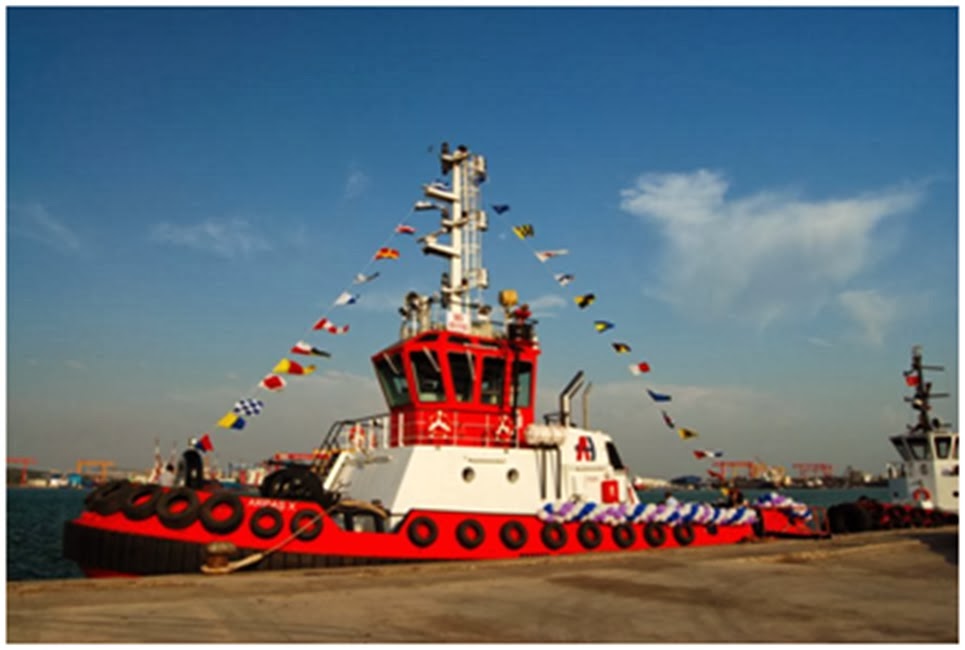The Evolution of Tugboats
Tugboats have a rugged, old world charm that attracts a
brand of enthusiasm few other boats can. They are one of the sea’s most
hardworking, yet humble, marine vessels, and their history holds tales of
perseverance, family tradition and community. When the first tug launched from
a Scottish harbor in 1871, its power betrayed its size and unassuming purpose.
Within a century, tugs had become a commercial replacement for horses and
mules, and were directly responsible for the ballooning American canal system.
While they appear to have their feet planted firmly in past centuries, they are
untouched by the concerns of today. The
sector’s experience of the recession was a tumultuous one dominated by a fickle
freight industry. On a more positive note, as tugboats emerge from a shaky five
year revenue crisis, their technological future is becoming brighter than ever.
Like the rest of the travel industry, anti-pollution concerns, high tech
innovations, and budget worries are expected to alter the way designers approach
their projects, transforming tugboats for
sale into prouder vessels with plenty to brag about.
Eco-friendly
Propulsion
In 2008, the fact that tugboats ran on diesel caused plenty
of hand-wringing as the sector faced the 2007 regulations governing all
remanufactured marine engines. Tough standards meant that, by 2015, all
tugboats would have to reduce their emissions by 90%. Hybrids were the obvious
answer, and many expected that technology would change before expected price
increases in diesel fuel. The actual change was more sluggish than expected,
but the sector is currently making significant inroads. The world’s earliest
hybrid tugboat was launched in 2010, and in 2013, the first liquefied natural
gas tugboats were launched bearing Rolls Royce engines. The tug’s past as a
pollution-belching vessel will soon be too distant to remember. Smoky harbors
will eventually be a thing of the past, but tugboats enthusiasts will be
rewarded with more than simply a clear conscience.
Pocket-Friendly Engines
As liquefied natural gas (LNG) becomes increasingly
available, tug owners will find themselves with easier budgets to contend with.
The non-toxic, non-corrosive gas has a greater energy density than diesel,
which makes it more cost-efficient over long distances. By 2020, it is likely
that an even more energy efficient innovation will give tug operators more bang
for their buck: The E3 tug project hopes to offer a fresh hybrid propulsion
system that functions
more cleanly, quietly, and cost-effectively. Cheaper production will not
only offer cheaper running costs but lower investment outlay, too, as
production becomes faster and less expensive.
High Tech Features
Today’s tugs need far more horsepower than they did in the
past and with that, maneuverable docking will need to improve. They will
operate with fewer crewmembers, and will slowly work towards better automation.
Compact ship docking tugs can currently pull over 60 tons despite their compact
size, but as the market becomes increasingly competitive, they will
singlehandedly manage the work that used to require four tugs. As marine
personnel availability dwindles, tug design will focus increasingly on this
aspect, but comfort is another influential factor. Low sheen finishes now offer
reduced water reflection, while on-board solar power offers hot water.
Tomorrow’s tugboats will follow in the footsteps of the
motoring sector by introducing more comfortable, user-friendly features that
will revolutionize the industry. Yesterday’s trends have shaped the tug market
relatively little, but the current changes will bring about a far more dramatic
evolution. This is partially due to the fact that the industry is burgeoning,
with rapidly growing sales, revenues, and production rates. As tugboats
increase in demand, those who design them will have greater expectations to
sate.
Guest Post By Carolyn Taylor






.jpg)



